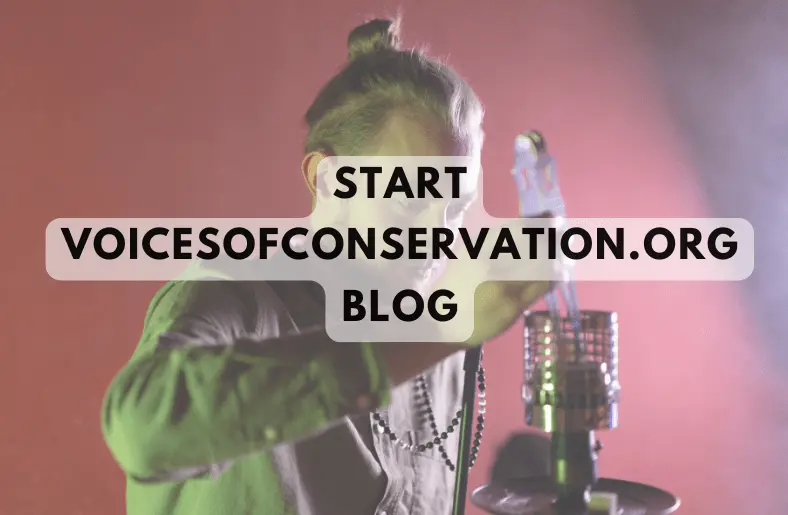The “Start VoicesofConservation.org Blog” plays a crucial role in environmental awareness. It connects individuals with vital conservation goals. By engaging readers, it highlights the importance of protecting nature. Furthermore, this blog aims to inspire action in preserving wildlife and ecosystems. As a result, it encourages sustainable practices and fosters global collaboration. Through education and shared insights, the blog empowers people to take part in impactful conservation efforts.
The Mission of Voices of Conservation
The mission of Start VoicesofConservation.org Blog of Conservation is to protect and restore the environment. By raising awareness, the blog inspires people to engage in conservation efforts. It emphasizes the importance of preserving ecosystems and wildlife globally. Through collective action, the blog believes we can tackle environmental challenges effectively.
Moreover, the mission involves creating lasting change through education and community-driven approaches. It motivates people to be accountable for their surroundings. By fostering collaboration, Voices of Conservation aims to build a sustainable future for generations to come. Additionally, it emphasizes giving local communities the tools they need to lead conservation efforts.
Key Conservation Goals: Protecting Wildlife
One of the main Start VoicesofConservation.org Blog goals is protecting wildlife from threats such as poaching and habitat destruction. By focusing on endangered species, the blog advocates for stronger protections and safer environments. This includes both direct actions and long-term strategies to safeguard wildlife.
In addition, preserving biodiversity is essential for maintaining balanced ecosystems. The blog emphasizes the importance of protecting natural habitats that support wildlife. Conservationists also seek to raise awareness through cooperation and education. Ultimately, these efforts contribute to healthier ecosystems and a sustainable future for both wildlife and humans.
Restoring Natural Habitats
Restoring natural habitats is a crucial step toward environmental recovery. By rehabilitating degraded areas, ecosystems thrive again. This process involves planting native vegetation, cleaning polluted water, and rebuilding soil health.
Additionally, habitat restoration supports wildlife by providing essential resources and shelter. It also improves biodiversity, enhancing overall ecosystem resilience. Moreover, local communities benefit from healthier environments and sustainable resources. Through collaborative efforts, we can restore balance and ensure a more sustainable future for all species.
Climate Change and Conservation
Climate change significantly impacts ecosystems, threatening biodiversity and altering habitats. Rising temperatures and extreme weather disrupt natural cycles, endangering species. Thus, conservation efforts must focus on mitigating these effects.
Moreover, reducing carbon emissions is essential to slowing climate change. Protecting forests and promoting sustainable practices can help absorb CO2. Conservation projects must adapt, considering these environmental shifts to safeguard wildlife. By addressing climate change, we ensure the resilience of ecosystems. Consequently, effective conservation strategies must incorporate climate action to secure a sustainable future for both nature and humanity.
The Role of Education and Awareness
Promoting conservation efforts requires education and awareness. First, informing people about environmental issues encourages responsible actions. By increasing knowledge, we empower communities to protect nature effectively.Furthermore, raising awareness fosters a sense of responsibility.
It motivates people to take part in conservation efforts and embrace sustainable lifestyles. Schools, media, and social platforms are vital tools for spreading these messages. Therefore, education plays a significant role in building a global conservation movement. It connects people to nature, ultimately leading to positive environmental change. Through continuous learning, we can ensure a more sustainable future for generations to come.
How Communities Are Empowered
Communities are empowered through education and involvement in conservation initiatives. First, giving people access to resources empowers them to make wise choices. This builds confidence, enabling individuals to take action in protecting their environment. Additionally, local leaders are trained to guide others in sustainable practices.
By fostering teamwork, communities become united in their efforts. With support, communities can actively contribute to restoring habitats and protecting wildlife. Ultimately, this empowerment strengthens collective action and leads to lasting environmental benefits. Through collaboration and knowledge, communities can play a crucial role in conservation success. Change is driven by empowered people, guaranteeing a sustainable future for all.
How to Get Involved in Conservation Efforts
Getting involved in conservation is simple and rewarding. First, consider volunteering with local organizations. Through hands-on work, you directly contribute to projects protecting wildlife and ecosystems. Additionally, you can participate in community clean-ups or tree planting events. These activities make a noticeable impact on the environment.
Furthermore, supporting conservation financially can amplify efforts and fund essential programs. You can also spread awareness by sharing conservation information with friends and family. Even the smallest action contributes to long-lasting change. Together, these efforts empower individuals to actively protect the planet for future generations. Begin now and contribute to the solution!
Measuring Success
Measuring success in conservation involves tracking progress over time. Initially, setting clear, achievable goals is crucial. For instance, wildlife population recovery or habitat restoration targets can help measure improvements. Additionally, using data from field studies, like animal counts or vegetation growth, offers insights into effectiveness.
Monitoring these changes regularly ensures that efforts remain on track. Moreover, community involvement and awareness are key indicators of success. When local populations actively participate, it reflects long-term sustainability. Ultimately, success is not just about numbers but the positive impact on the environment and future generations. Monitoring progress keeps conservation efforts focused and effective.
Conclusion
In conclusion, conservation efforts require collective action and commitment. By understanding the mission, goals, and impact, we can create lasting change. Moreover, each step we take contributes to restoring our planet. Through education, awareness, and community involvement, we empower individuals to protect wildlife and natural habitats. Ultimately, every effort counts, helping us build a sustainable future for generations to come. Let’s take action now.



